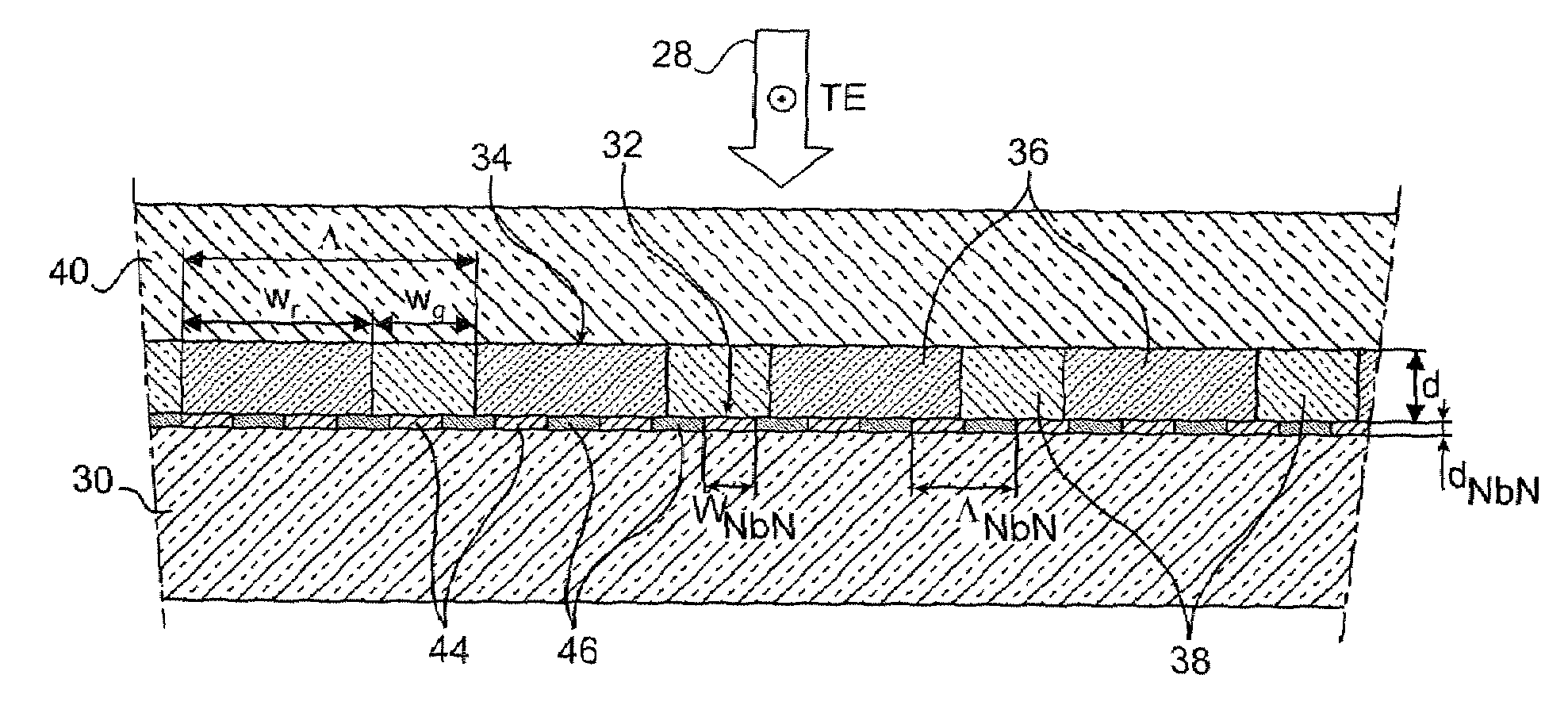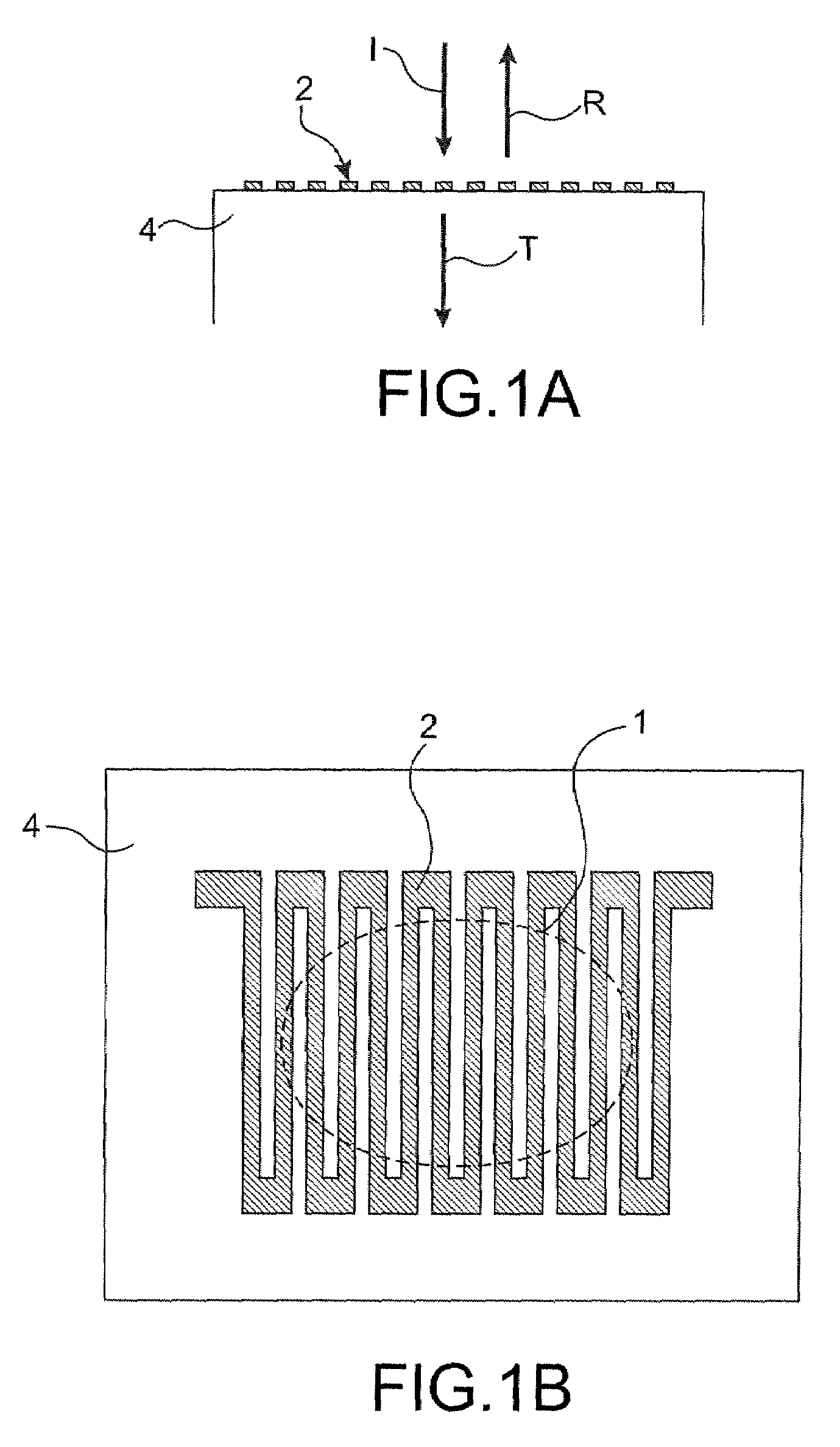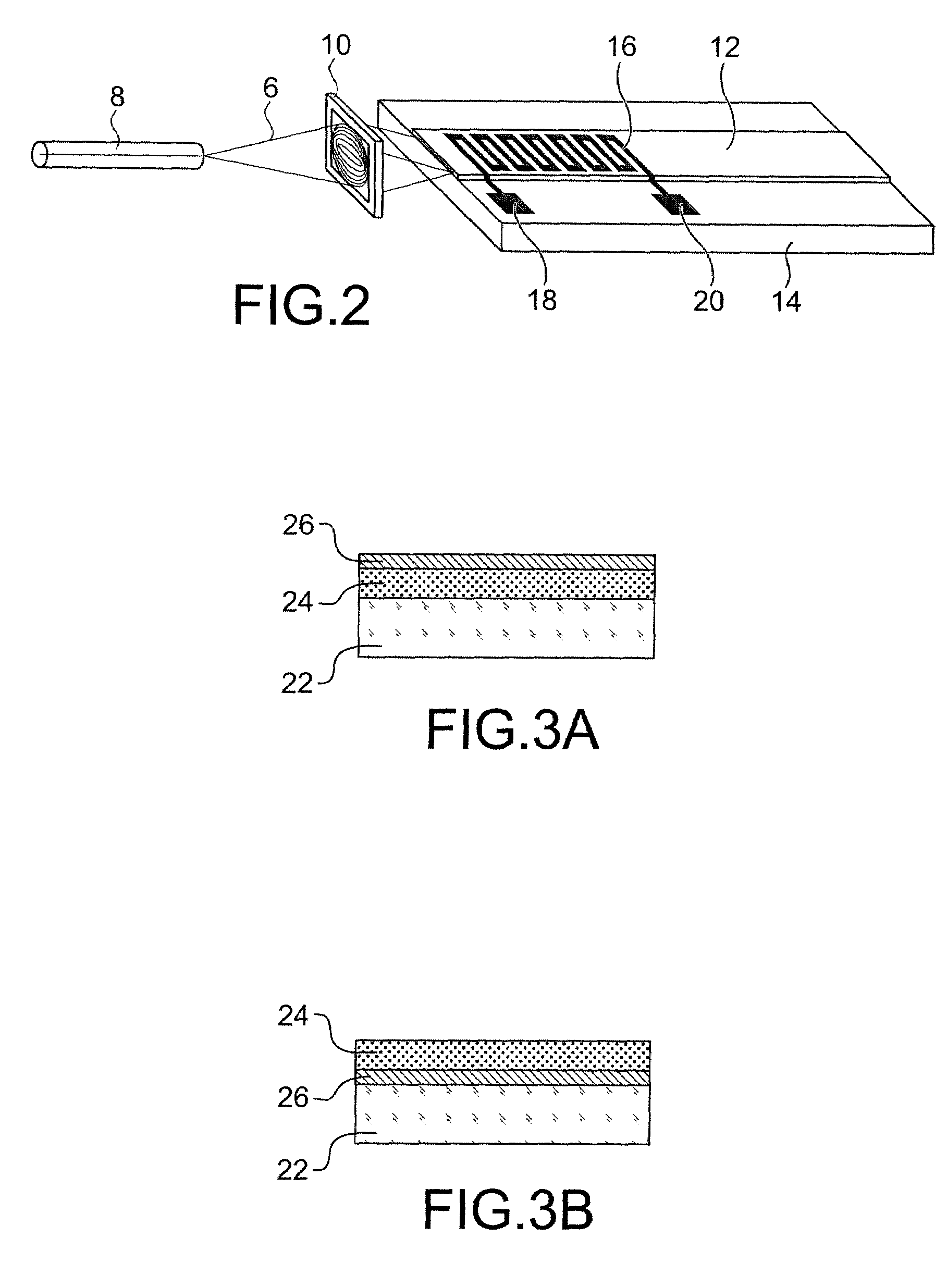High time-resolution ultrasensitive optical detector, using grating coupling
a technology of ultra-sensitive optical detectors and couplings, applied in the direction of photometry, photometry using electric radiation detectors, instruments, etc., can solve the problems of reducing overall efficiency, limited performance, and difficulty in reducing detection efficiency, etc., to achieve the effect of increasing detection efficiency and reducing the cost of operation
- Summary
- Abstract
- Description
- Claims
- Application Information
AI Technical Summary
Benefits of technology
Problems solved by technology
Method used
Image
Examples
Embodiment Construction
[0064]FIG. 4 is a schematic cross-section view of an example of the detector object of the invention. This detector is intended to detect an incident light 28, constituted of a single photon or of several photons.
[0065]The structure considered in FIG. 4 includes a dielectric substrate 30, whose refractive index is noted nO, and an ultra-thin superconducting layer 32, for example of NbN, whose thickness is equal to a few nanometers, on dielectric substrate 30. The latter is appropriate for the deposit of layer 32.
[0066]This layer 32 is intended to generate an electric signal using the energy of the photon(s) received. It forms a serpentine and therefore meanders as in prior art.
[0067]Reference will be made for example to FIG. 1B of the appended drawings where the layer includes parallel lines connected to one another by segments that are shorter than these lines and are perpendicular to the latter.
[0068]Other configurations can be considered for the serpentine, preferably configurati...
PUM
 Login to View More
Login to View More Abstract
Description
Claims
Application Information
 Login to View More
Login to View More - R&D
- Intellectual Property
- Life Sciences
- Materials
- Tech Scout
- Unparalleled Data Quality
- Higher Quality Content
- 60% Fewer Hallucinations
Browse by: Latest US Patents, China's latest patents, Technical Efficacy Thesaurus, Application Domain, Technology Topic, Popular Technical Reports.
© 2025 PatSnap. All rights reserved.Legal|Privacy policy|Modern Slavery Act Transparency Statement|Sitemap|About US| Contact US: help@patsnap.com



